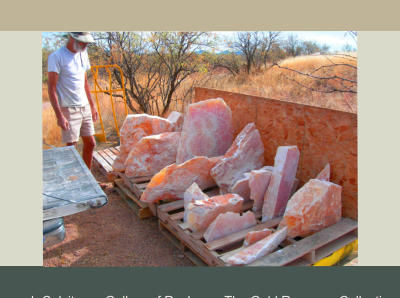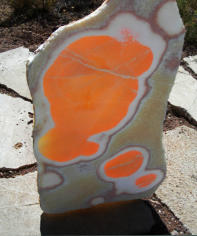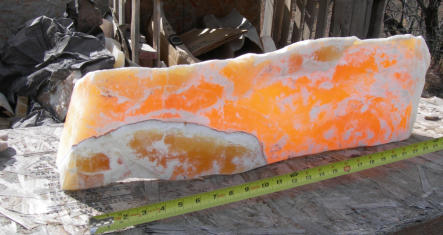Frequently Asked Questions - General Information




What is the best way to display the stone?
Back-light slabs with a candle or a electric lights such as LED’s. Illuminate cored-cylinders with a
small votive (tea-light) candle found in most drug stores, supermarkets, or craft stores. For sculpted
pieces or slabs, place the Honeycomb calcite to receive indirect light. As the light angle changes
throughout the day, each cell in the Honeycomb Calcite will change illumination intensity, based on
its degree of translucency. Experiment and enjoy.
What are some handling and safety considerations?
1) Use caution and common sense when using candles (open-flame) to illuminate the stone. Keep
candles away from drapes, carpet, books, other flammable items and children. Honeycomb Calcite
will absorb the heat of a candle or incandescent light bulb, thus making the stone hot - especially
when a tea-light candle is placed in a cored-cylinder. If you need to move the stone after being
heated by open-flame, use gloves, pot-holders or kitchen-mitts to hold the stone.
2) Honeycomb calcite is a strong stone. However, one potential weak area is along any thick white
chalky ‘lines’ that run through the stone. So handle carefully. When packing to move or to ship,
place slabs or cored-cylinders upright and use generous amounts of bubble wrap or other suitable
packing around the piece, the top and importantly the bottom. Don’t stack stone on top of each other
in storage or shipping boxes. When shipping, it’s best to box the stone and then place in a larger
box that is equally filled with packing.
Will the color fade if the stone is placed in direct sunlight?
Studies of long-term color fading in direct sunlight (Ultra-Violet (UV) damage), have not been
conducted. However, Personal experience and observations over time show that the side of the
stone facing direct sun (outside) will tend to ‘whiten’ (color fade). Therefore, it is recommended not
to place Honeycomb Calcite in direct 'outdoor' sunlight over a period of years unless a
liquid UV protective sealer coating is applied to surface of stone.
Indoor; most modern home windows afford some degree of UV protection. Therefore, stones placed
on indoor window sills with indirect sunlight, should see minimal effects of UV light damage.
Will Honeycomb Calcite become florescent if illuminated by a black light?
Fluorescence in minerals is caused by a wide range of 'activators' of which the concentration must
be restricted to below a certain level to allow the fluorescence in the presence of short-wave
Ultraviolet light. Although many types of calcite and amber will fluoresce, Honeycomb Calcite does
not seem to exhibit this property. The possible reason is that Honeycomb Calcite was formed with
activators such as Sulfur and Iron of significant concentration which acts to quench possible
fluorescence.
What is the white frosting on top of the cylinders?
The outer ‘skin’ of each stone seems to have some thickness of a hard white-chalky layer.
Honeycomb Calcite is calcium carbonate with the formula CaCO3. Calcium carbonate is the active
ingredient in lime and is created when Ca ions in hard water - found naturally in the environment -
react with carbonate ions to create a limescale (limestone).
When diamond core-drills are used to cut cylinders out of the stone, the process starts from the
surface of the stone, inward. Thus the white layer you see as the top of a core-cylinder, is the outer
skin of the stone. In most cases, the white coating tends to make the piece more visually interesting.
Can I order matching cylinders or slabs?
Each quarried boulder is unique in its cell pattern and color, thus no two pieces are the same.
However on custom orders, it is possible to work from from the same boulder in order to achieve
some degree of similarity the cell structure and color gradients.
What ‘finish’ work is performed on the stone?
Cored-cylinders are dipped in a diluted Muriatic Acid, then PH-balanced (neutralized) in
Sodium bicarbonate (baking soda). Slabs can either be polished for a glass-like finish or acid-
washed depending on the specified finished look. Polishing is laborious and adds cost to custom
stone fabrication. Small sculpted boulders are usually acid-washed.
email inquiries to info@stoneproducts.biz or phone 480-620-5386







